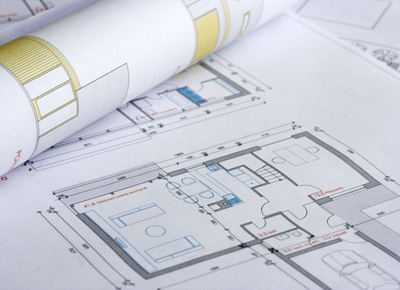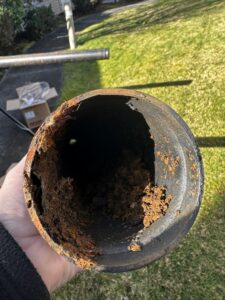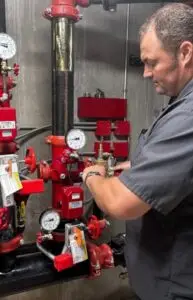If you are looking for a trusted fire sprinkler contractor in Washington, contact the professionals at Empire Fire Protection for a free consultation. We'll get you squared away and your project moving in the right direction.
Introducing Fire Sprinkler Designers
The vital role that fire sprinkler systems play in protecting lives and properties from the devastating impacts of fire is widely recognized. But have you ever wondered who designs these intricate, life-saving systems? The answer lies in the work of dedicated professionals known as fire sprinkler designers.
Fire sprinkler designers are the unseen heroes of the fire protection industry, operating behind the scenes to craft robust, reliable, and efficient systems that respond swiftly in the event of a fire. They transform the core principles of fire safety and engineering into a comprehensive plan that suits the specific needs of both residential and commercial spaces.
The Key Responsibilities of Fire Sprinkler Designers
The role of a fire sprinkler designer is multifaceted and critical. Their responsibilities extend far beyond sketching blueprints, encompassing a wide range of tasks that ensure the functionality and effectiveness of a fire sprinkler system.
Assessing Building Specifications: As part of their initial tasks, fire sprinkler designers delve into blueprints and site specifications. They collaborate closely with architects, engineers, and contractors, gathering information to grasp the unique requirements of each building and the potential challenges that might arise.
Designing the System: Following the initial assessment, designers use their knowledge and skills to lay out a comprehensive plan for the fire sprinkler system. This plan outlines the optimal locations for sprinkler heads, the best route for pipe layouts, and the most suitable type of sprinkler system.
Coordinating Installation: The work of fire sprinkler designers doesn't end once the plans are finalized. They oversee the installation process, working side by side with fire sprinkler fitters and other installation professionals to ensure the system is implemented accurately and works as designed.

The Tools and Technologies that Sprinkler Designers Use
Fire sprinkler designers are technologically adept professionals. They leverage the power of state-of-the-art software programs to aid in the design process. These tools help ensure accuracy, efficiency, and compliance with local building codes and industry standards.
At Empire Fire Protection, our designers use advanced software like AutoCAD and AutoSprink to create accurate, reliable designs. These programs allow for precise hydraulic and seismic calculations, which are crucial in designing an effective fire sprinkler system.
Delving into the Design Process of Fire Sprinkler Systems
The process of designing a fire sprinkler system is complex and intricate. It begins with understanding the building's specifications, which inform the system's design. Once the design is drafted, it is subjected to rigorous review and revision processes to ensure its effectiveness and compliance with safety standards.
After finalizing the design, a comprehensive stock list is created. This list outlines all the materials required for the system's fabrication and installation. In instances where the municipal water supply is insufficient, our designers may include a fire pump in the design to augment water pressure and ensure effective system operation during a fire event.
Acquiring the Right Knowledge: Essential Qualifications and Certifications
Fire sprinkler designers are expected to have a solid educational background in a related field, such as engineering or architecture. However, their education doesn't stop at earning a degree. These professionals must continually update their knowledge to keep up with advancements in technology, changes in building codes, and new fire safety regulations.
One of the most respected certifications in this field is provided by the National Institute for Certification in Engineering Technologies (NICET). A NICET certification attests to a designer's competence and professional expertise. At Empire Fire Protection, we're proud to have NICET level III certified designers on our team.
Recognizing the Importance of Fire Sprinkler Designers in Fire Safety
The impact of fire sprinkler designers on fire safety is immeasurable. Their work is instrumental in ensuring that fire sprinkler systems function correctly, helping to prevent the spread of fires, mitigate property damage, and most importantly, save lives. Designers create the initial line of defense against fires, making them crucial players in any comprehensive fire safety strategy.
At the Heart of Empire Fire Protection: Our Designers
Empire Fire Protection takes great pride in our team of highly experienced fire sprinkler designers. Armed with a deep understanding of fire safety and engineering principles, our designers provide high-quality designs tailored to each building's unique needs.
Our service area spans a broad range of locations in western Washington, including Seattle, Tacoma, Olympia, Auburn, and many more. But our services extend far beyond just design. We provide comprehensive fire safety solutions, from fire sprinkler system design to installation, maintenance, and repair.
To learn more about our fire safety services, or to discuss your building's needs with our expert designers, please contact us. We're here to help you enhance your fire safety measures and protect your properties.
The Final Takeaway
Fire sprinkler designers are invaluable contributors to the fire safety industry. Their expertise and work directly influence the effectiveness and efficiency of fire sprinkler systems, thereby safeguarding lives and properties. When you work with skilled fire sprinkler designers, like the team at Empire Fire Protection, you can rest assured that your fire safety measures are in capable hands.
For more information on fire safety, explore our blog. We aim to keep you well-informed and safe. For detailed specifications on fire sprinkler systems, we also recommend visiting the NFPA 13 standards.




